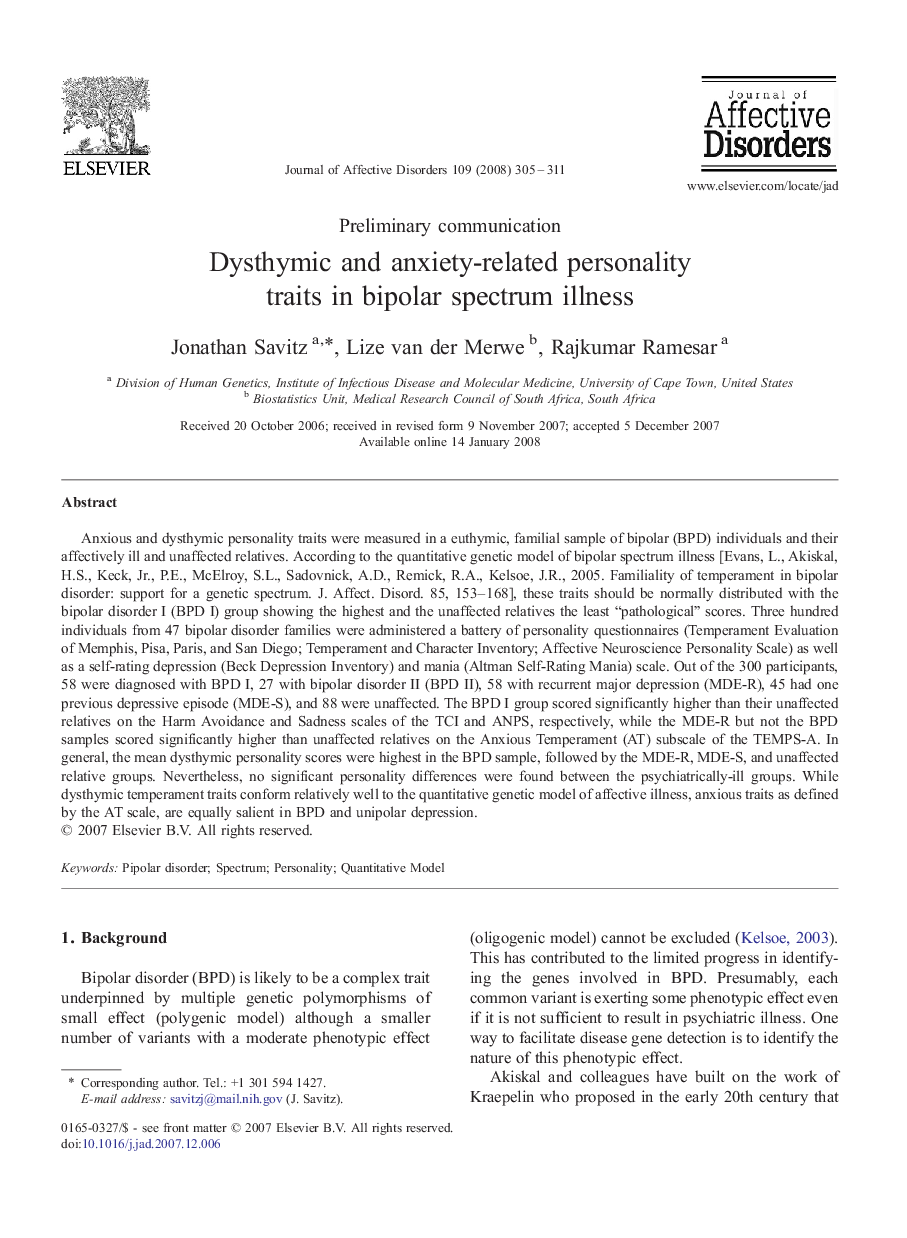| کد مقاله | کد نشریه | سال انتشار | مقاله انگلیسی | نسخه تمام متن |
|---|---|---|---|---|
| 4187347 | 1277630 | 2008 | 7 صفحه PDF | دانلود رایگان |

Anxious and dysthymic personality traits were measured in a euthymic, familial sample of bipolar (BPD) individuals and their affectively ill and unaffected relatives. According to the quantitative genetic model of bipolar spectrum illness [Evans, L., Akiskal, H.S., Keck, Jr., P.E., McElroy, S.L., Sadovnick, A.D., Remick, R.A., Kelsoe, J.R., 2005. Familiality of temperament in bipolar disorder: support for a genetic spectrum. J. Affect. Disord. 85, 153–168], these traits should be normally distributed with the bipolar disorder I (BPD I) group showing the highest and the unaffected relatives the least “pathological” scores. Three hundred individuals from 47 bipolar disorder families were administered a battery of personality questionnaires (Temperament Evaluation of Memphis, Pisa, Paris, and San Diego; Temperament and Character Inventory; Affective Neuroscience Personality Scale) as well as a self-rating depression (Beck Depression Inventory) and mania (Altman Self-Rating Mania) scale. Out of the 300 participants, 58 were diagnosed with BPD I, 27 with bipolar disorder II (BPD II), 58 with recurrent major depression (MDE-R), 45 had one previous depressive episode (MDE-S), and 88 were unaffected. The BPD I group scored significantly higher than their unaffected relatives on the Harm Avoidance and Sadness scales of the TCI and ANPS, respectively, while the MDE-R but not the BPD samples scored significantly higher than unaffected relatives on the Anxious Temperament (AT) subscale of the TEMPS-A. In general, the mean dysthymic personality scores were highest in the BPD sample, followed by the MDE-R, MDE-S, and unaffected relative groups. Nevertheless, no significant personality differences were found between the psychiatrically-ill groups. While dysthymic temperament traits conform relatively well to the quantitative genetic model of affective illness, anxious traits as defined by the AT scale, are equally salient in BPD and unipolar depression.
Journal: Journal of Affective Disorders - Volume 109, Issue 3, August 2008, Pages 305–311